
Humans are natural thrill-seekers, but some increasingly popular sports are redefining what it means to be extreme. Daredevil athletes are pushing unimaginable boundaries as they propel their bodies against gravity and through air, water and ice in ways nature never intended.
But don’t say “Not for me!” just yet. There are ways to experience some of the adrenaline rush — and discover new adventures — without risking your life. Here’s our guide to pushing yourself out of your comfort zone without all of the danger.
RELATED: Endorphins and the Truth About Why Exercise Makes You Happy
7 Extreme Sports You Can Try Without Regrets
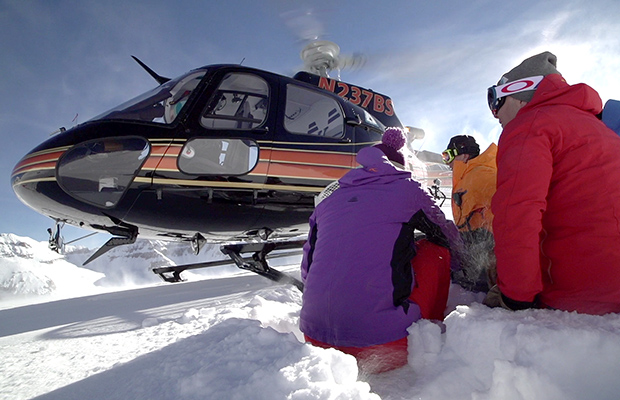
1. Heli-Skiing
Sick of waiting in lift lines when you hit the slopes? Imagine being dropped by a helicopter on untouched snow. “Heli-skiing is a powder lovers’ dream,” explains Greg Malver of Telluride Helitrax in Colorado. “You’re skiing in some of the most beautiful terrain in the backcountry where you don’t see anyone else.” Yet skiing in remote areas that aren’t maintained by resort workers or patrolled by rescue personnel is particularly risky. You could set off an avalanche or be injured in an accident with little access to help.
Try it: Pick a company that offers heli-skiing with guides who know the terrain and can plan a trip suitable for intermediate skiers. To minimize the chance of an avalanche, Helitrax’s guides pick areas that aren’t so steep, depending on snow conditions. “We ski on terrain where the steepness is between a double blue square and a black diamond,” he says, adding that you have to be comfortable with deep soft snow that’s not groomed or packed. “Still, a strong adventuresome attitude can compensate for lack of finesse.”
RELATED: 5 Exercises to Get Ski and Snowboard Ready
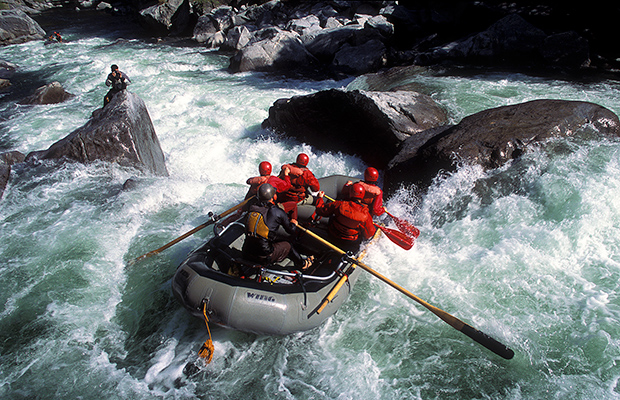
2. Whitewater Rafting
Whitewater rafting is exhilarating, but there’s a lot that can go wrong when you’re hurtling down rushing river rapids on a rubber boat. The raft can flip, or you can fall out and hit a rock or get your foot trapped in debris and drown.
But navigating even the wilder runs is a relatively safe sport, if you go with a group led by experienced guides, says Scott Armstrong of All-Outdoors California Whitewater Rafting. “It’s perceived as risky, but there aren’t a lot of injuries or deaths. Even in fast-moving water, such as Class 4 or 5 rapids, we have a lead boat with guides and a bunch of boats that work together to rescue swimmers.” (Thankfully, it’s not likely that you’ll fall off the raft.)
Try it: Armstrong suggests getting your feet and bum wet on a calmer Class 3 rapid (they’re ranked from 1 to 5, according to degree of difficulty). Planning your trip during the spring rush, when the water levels are higher, can make you more likely to float over rocks and debris if you do fall out, too. And even though falling off isn’t likely, you’ll want to be confident of your swimming skills — just in case.
RELATED: 6 Tips to Improve Your Swimming Right Now
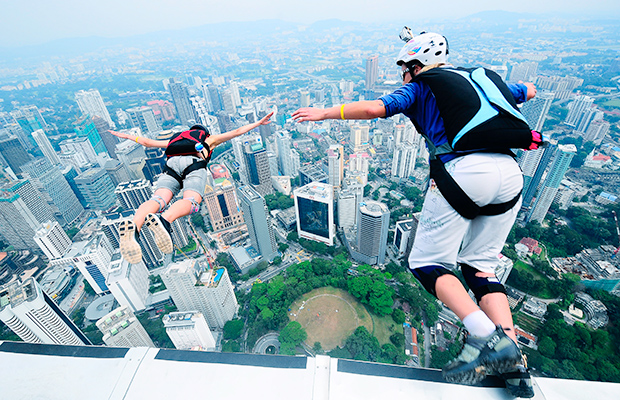
3. BASE Jumping
BASE stands for Building, Antenna, Span and Earth — and it doesn’t get any more extreme than jumping from one of the four options, equipped with only a wingsuit and rapidly deploying parachutes. That’s because unlike skydiving, there’s a much shorter window to experience the thrill of the fall and hope your chute activates in time. The sport is so dangerous that the National Park Service has outlawed BASE jumping in its parks. (Climber Dean Potter and his partner died this summer after illegally jumping from 3,500-feet high Taft Point in Yosemite Valley, a popular spot.)
Try it: If you want to feel what it’s like to fly, try skydiving first. Since most jumps are done in tandem with an experienced instructor, it’s a safer way to gain the skills you need to progress to BASE jumping. One BASE jumping school requires you to have mastered 300 jumps before you’re eligible to sign up for a course.
RELATED: 25 Athletes Redefining ‘Extreme’ on Instagram
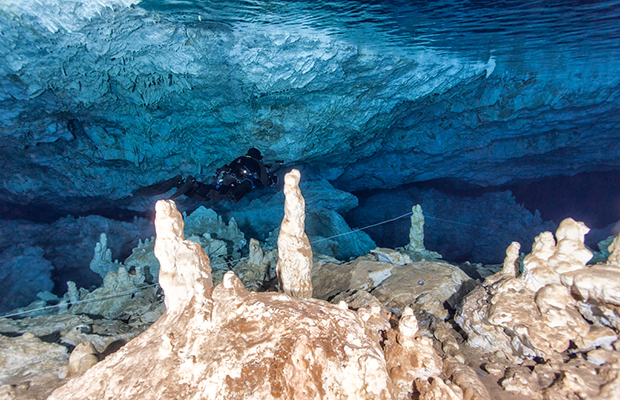
4. Cave Diving
If you loved to explore caves as a kid, cave diving gives you the chance to admire fascinating geologic formations while swimming through crystal blue waters. It’s riskier than regular scuba diving, though, because you can get stuck in a cave and run out of air. “You can get lost if you don’t see the exit or turned the wrong way,” explains Kurt Huber of Blue Grotto Diving Resorts in Williston, Florida. “Or you panic and kick up silt and can’t see where you are.”
Try it: Don’t be scared off. You can start with cavern diving. That’s a limited cave dive in which you dive with a group guided by a rope that reaches only 120 feet inside. “It’s less dangerous because you can still see daylight coming through the exit,” says Huber. If you’re a fan, you can work on getting certified to dive deeper.
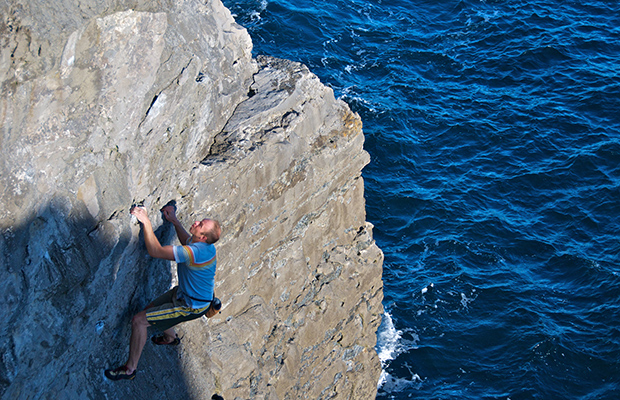
5. Free Solo Rock Climbing
If you think rock climbing thousands of feet in the air supported by harnesses and ropes sounds petrifying enough, it’s hard to understand why certain enthusiasts feel the need to push the envelope by climbing without any safety equipment at all — by themselves. Extreme sports correspondent Michael Ybarra tried to explain the appeal in The Wall Street Journal. “Part of the attraction (and no little of the terror) of climbing is problem solving, figuring out what to do in a situation where there are no great options and no little peril in making a wrong move,” he wrote. Sadly, he died a few years ago on the 12,000-foot Matterhorn Peak in California’s Sierra Nevada Mountains.
Try it: If you want to take up rock climbing, learn to love your gear and go with a guided group. Beginners can also build their strength with what’s called “bouldering.” You’ll climb without a rope — but you’ll stay close to the ground, only going as high as you feel safe. Also, don’t underestimate the fun of an indoor climbing gym.
RELATED: Ice Climbing: The Hottest Winter Sport You Haven’t Tried Yet

6. Big Wave Surfing
Wiping out in regular-sized surf can be terrifying. How about surfing down the face of a humungous wave several stories high? (Or falling 40 feet from the top of a giant wave, as this surfer did in Hawaii and likened to “jumping off a cliff.”) There are just a few spots in the world where waves surface to 20 to 50 feet, and it takes incredible skill and talent to navigate them. “Everything is magnified,” explains Thwen Chaloemtiarana of Mavericks Surf Company, which is named for the famous big wave spot out of Half Moon Bay in California. “When you’re hit by a 30-foot wave, it’s like being hit by avalanche. You could be in 20 feet of foam, and you can’t get your head out to breathe. And when you fall from that distance, you hit the water hard. You could tear your arm out of its socket.”
Try it: His not-so-surprising advice: Master the small waves first. “You’ll get the same rush and thrill if you concentrate on progressing,” says Chaloemtiarana. You’ll always want to get your lungs ready by taking a breath-holding course. (Surfing star Tom Whitaker reportedly could hold his for five minutes and 25 seconds!) But don’t worry, there’s still plenty of tubular fun to be had surfing six-footers.
RELATED: 4 Workouts to Get You In Surfing Shape

7. High-Lining
If walking on a tethered line between two buildings, rocks or trees sounds dangerous, that’s because it is. “You have to be able to catch the line if you fall off and climb back up. If you set up the line incorrectly or don’t use a harness, you can die,” explains Jerry Miszewski of slackline outfitter Balance Community. (Check out this video of one harness-less high-liner recovering from a fall near Lost Arrow Spire in Yosemite National Park.)
When done safely, the mental challenge is invigorating, claims Miszewski, who’s high-lined all over the world. “You have to be completely focused, so it forces you to have a clear mind. You also have a view from a unique vantage point where no one else has been.”
Try it: You don’t have to go way up in the air to get a hint of the thrill. Start by balancing on a slackline suspended a foot or two off the ground. You’ll know you’re ready to elevate your game when you can walk the length of the line without falling off and easily switch from sitting to standing positions. “When you get comfortable with the fact that you are high up, you can actually enjoy it,” says Miszewski. “After a while the adrenaline goes away, but your heart still pounds.”
